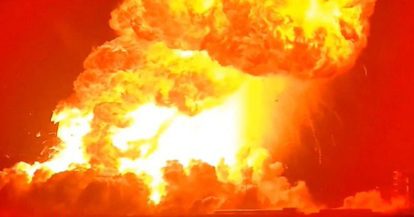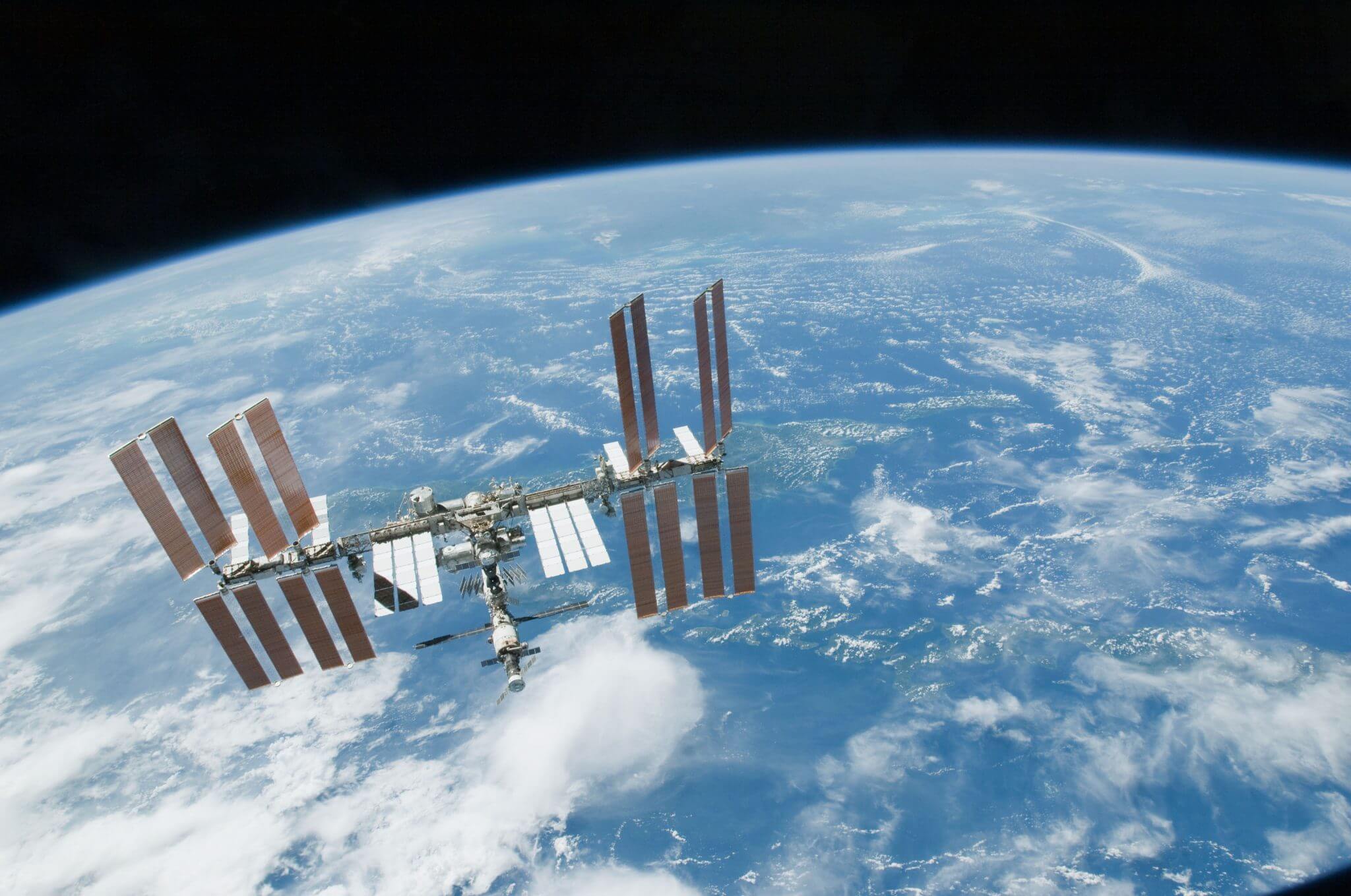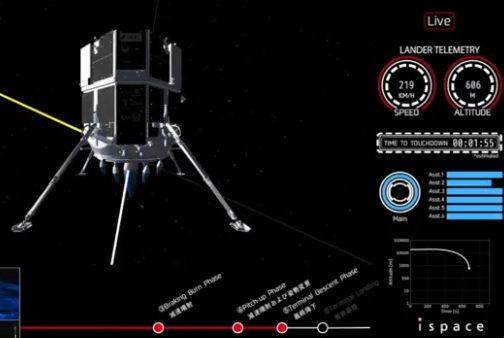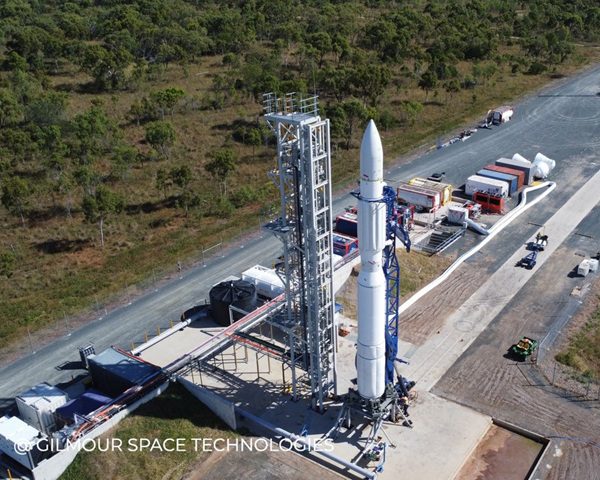While USA decides whether or not it wants to continue with the International Space Station, whose cost-effectiveness is often criticised given its very high cost (US$100 billion and counting), it was not, of course, America’s first foray into space station operations. That honour went to 6.7m diameter Skylab which flew operationally between 1973 and 1974. It was derived from surplus Saturn V hardware and which, in non-inflation adjusted dollars, was about 100th of the cost of the ISS whose largest modules are only 4.5m diameter.
Skylab was designed from the Saturn rocket series’ S-IV upper stage, with a special Apollo Telescope Mount added on to make solar observations outside of the Earth’s atmosphere. It was originally designed to be a “wet” stage in that it would have had hydrogen fuel inside it as part of a Saturn 1B launch which would have been drained before crew would enter, via one of the multi docking ports (later reduced to just one). However, in the end, it was launched “dry” by a surplus larger Saturn V which did not need the S-IV’s fuel. After a shaky start which involved the first and second of the three Skylab crews making running repairs to sun shields and solar arrays (see later) the effort paid off and the exceptionally roomy Skylab gave America a successful riposte to the Soviet Salyut space station effort. The observations and research done by its often overworked crews, lead to great progress in human understanding of solar science, microgravity manufacturing, and biomedical research.
While America used mainly US engineers on its Apollo and Skylab programmes (plus a few very obvious German rocket scientists) there was also a smattering of highly skilled British engineers working on the programme. One of these was Colin Ledsome who worked on the Skylab programme at NASA’s Marshall Space Center as part of his employment at Teledyne Brown.
In a lecture at the British Interplanetary Society in London in February, Ledsome, explained in his own career history how he came to be involved in the Skylab project. After previously working on thin-walled tank structures on UK’s Blue Streak rocket programme, joined Teledyne Brown and initially worked on Skylab’s Apollo Telescope Mount. It used a baseline hexagonal structure derived from the lunar module and was gimballed to allow fine corrections to be made in conjunction with fine sun sensor in order to take account of space station movements caused by astronauts bouncing around inside. Colin Ledsome noted that in this pre-CCD camera age film was still the medium of recording images. That is, while the mount could be controlled from the inside, the film cassettes still had to be loaded into and recovered via umbilically-tethered spacewalking astronauts.
Ledsome was moved from this onto designing the main solar arrays of the station (the Apollo Telescope mount had its own) which were actually non-symetrical and used different hinges to each other. Colin Ledsome recounted how NASA was concerned that damage might be caused by the arrays opening too fast (their deployment was due to take just 60 seconds) and that they believed that a braking system would be needed. Ledsome did his own calculations and noted that in fact the deployment would take longer than 17 minutes. Nevertheless, brakes were designed and deployed.
While the threat of micrometeoroids to Skylab and its crew continued to exercise the minds of NASA (especially because of the 40,000psi gas tanks being carried), indirectly, they were nearly the cause of the station’s demise during launch.
One of the arrays never got deployed at all after its micrometeoroid cover was ripped off by aerodynamic buffeting during Skylab’s Saturn V launch, which in turn pulled out the array which was also torn off. While the first Skylab crew managed clear debris to allow the second array to be deployed, they noted that its concentina deployment mechanism was moving very slowly – it took nearly 20 minutes – showing that Ledsome was correct in his original calculations and that the deployment brakes were not, in fact, needed.
While a tad self congratulatory on this, Ledsome was however fulsome in his praise of his fellow engineers – especially those at IBM. He described how IBM’s Instrumention Unit on the Saturn V effectively saved the Apollo 12 mission from failure by rebooting all the gyroscopes on the command module which had been knocked senseless after a lightning strike during the launch.
Ledsome noted that his career changed completely after Apollo and Skylab. While his US colleagues found themselves out of work, Ledsome himself had already secured a job designing trains back in England, including the ATP. That infamous tilting train was never successful due to the motion sickness induced by the overly-tilting mechanism. He refered to this experience when asked whether artificial gravity by rotation was a likely runner for future long range spaceflight. Ledsome replied that once a body’s balance mechanism gets used to going in one direction, turning round usually induces imbalance and nausea.
Colin Ledsome remained critical of the “bean counters” within the US congress whose cuts on the development costs he blamed on the faulty design of the Space Shuttle, and on the NASA managers whose overruling of engineers was mainly responsible for the launch failure of STS-51L Challenger.
Similarly, Ledsome was also critical of the way that NASA tended to impose its design criteria on contracting engineers. Ledsome believed that they should have been given more freedom to work out solutions themselves.
As for Skylab, well, despite NASA’s predictions that it might be rescued by the Space Shuttle, it re-entered over Australia in 1979 – as correctly predicted by amateur orbit decay modellers based at Acton School, in London.
While Skylab is, of course, history, the concept of a mainly pre-constructed (and hence cheaper) space station live on. There are reports that a “son of Skylab” (Skylab II) might be created from a 8.5m diamter “dry” SLS upper stage. This would not be in Low Earth Orbit as Skylab was. Instead, it would be positioned at the Lagrangian L2 Earth Moon position.
Comment by David Todd: Along with the Apollo Moon landings, Skylab, was one of the great early spaceflight achievements of NASA. In fact, NASA should have made more of it and should have definitely launched some successors. However, the deal that was done was that the Saturn V had to be scrapped in order to save the development of the Space Shuttle. In fact, impressive as they were/are, the Space Shuttle and its wildly expensive child, the International Space Station (ISS), were wrong turns in terms of spaceflight cost/effectiveness. For example, for about the same money as the single International Space Station complex, about 50 Skylab space stations could have been flown, with all of the concomitant advantages that their continuous scientific research would probably have achieved.






